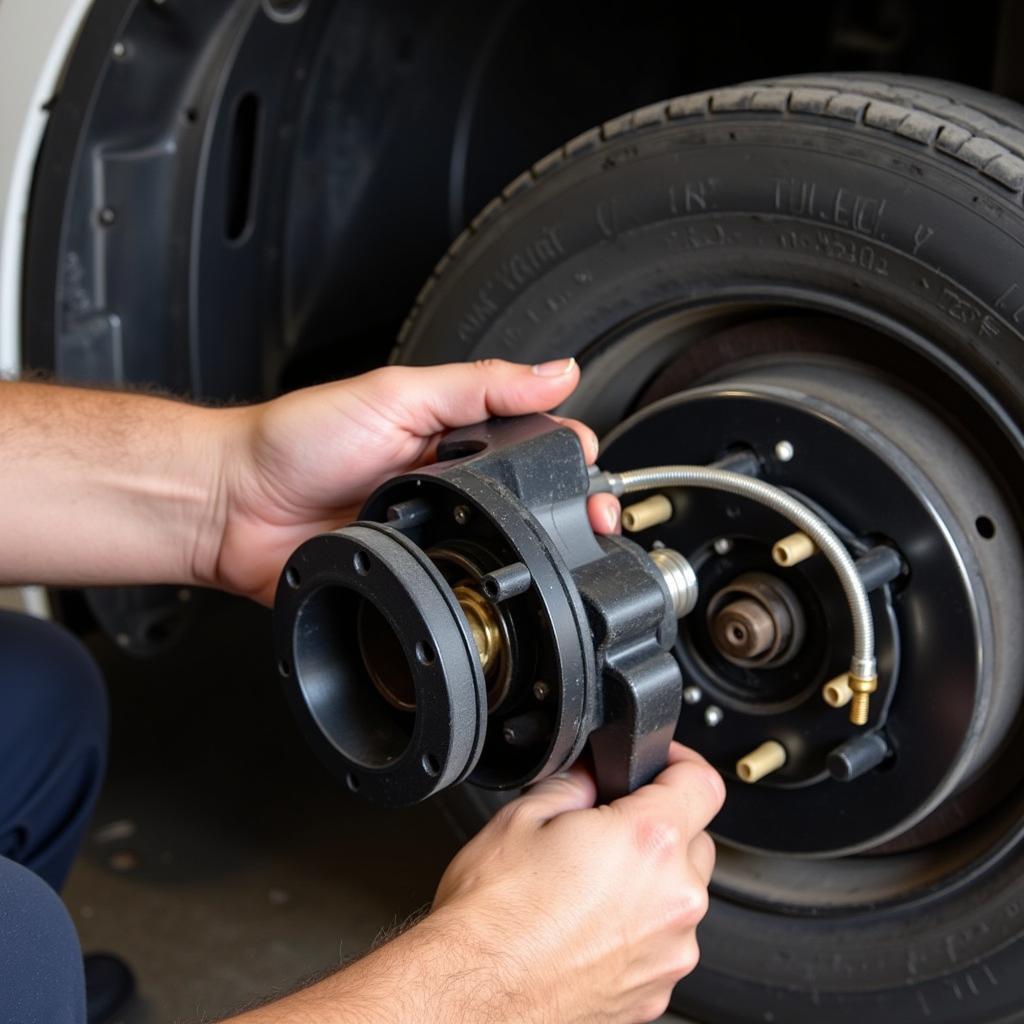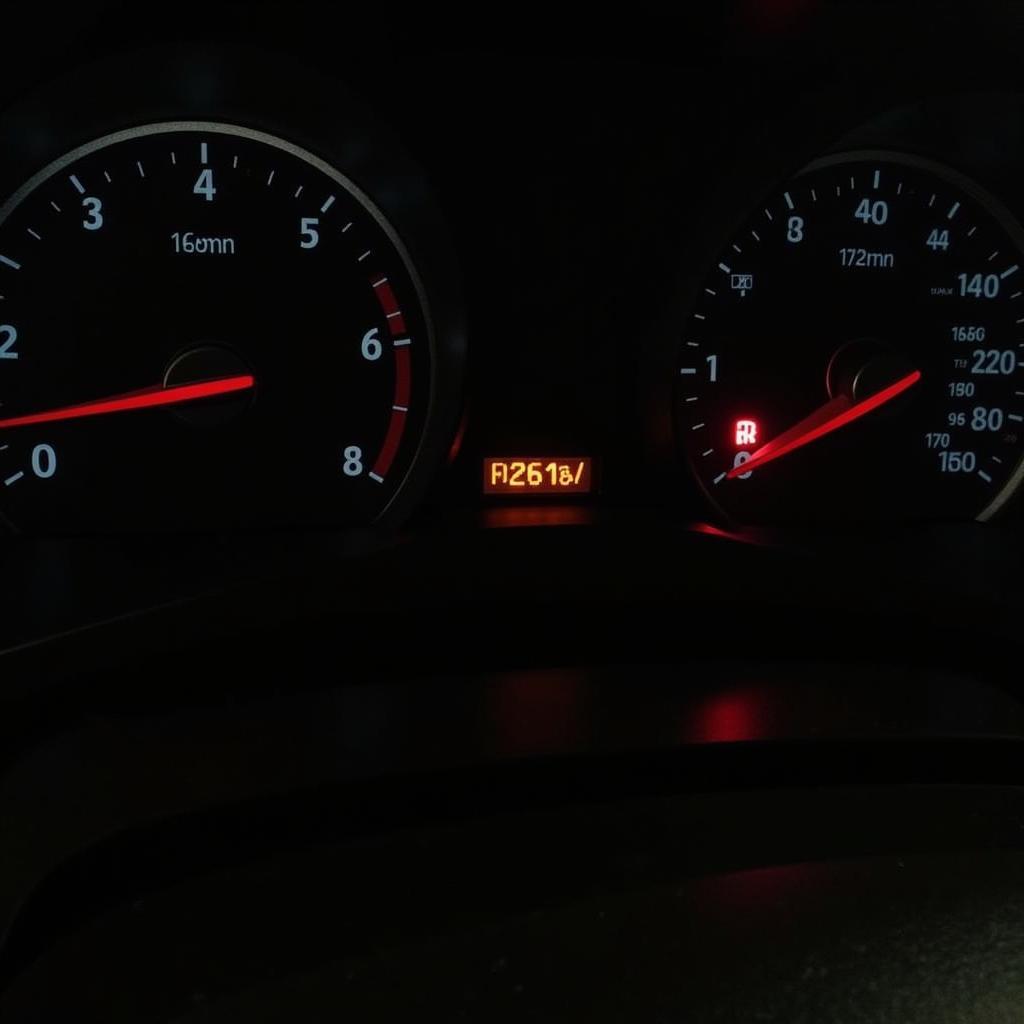Imagine cruising down the road, and suddenly your brake warning light illuminates on the dashboard, accompanied by a stiff brake pedal. This scenario is not only inconvenient but also a potential safety hazard. Don’t panic! This article will guide you through common causes of a stiff brake pedal and a lit brake warning light, helping you diagnose the problem and determine the appropriate course of action.
Understanding the Brake Warning Light
The brake warning light on your dashboard is a crucial safety feature that alerts you to potential issues within your braking system. When this light illuminates, it’s your car’s way of saying, “Pay attention to my brakes!” It could signal a variety of problems, ranging from low brake fluid to a serious malfunction within the system.
Common Causes of a Stiff Brake Pedal and Illuminated Brake Warning Light
A stiff brake pedal, often experienced in conjunction with the illuminated brake warning light, can stem from several factors:
1. Low Brake Fluid
Brake fluid is the lifeblood of your car’s braking system. It transmits the force you apply to the brake pedal to the wheels, bringing your vehicle to a stop. Over time, brake fluid naturally degrades and absorbs moisture, reducing its effectiveness. Additionally, a leak in the braking system can lead to low brake fluid levels.
Solution: If you suspect low brake fluid, check the fluid level in the reservoir. If it’s low, add the recommended brake fluid type for your car model. However, if the fluid level remains consistently low, it indicates a leak that requires immediate professional attention.
2. Faulty Brake Booster
 Faulty Brake Booster
Faulty Brake Booster
The brake booster utilizes vacuum pressure to multiply the force you apply to the brake pedal, making braking easier. A malfunctioning brake booster, often due to a vacuum leak, can result in a hard-to-press brake pedal.
Solution: Diagnosing a faulty brake booster often requires specialized tools. If you suspect a problem, it’s crucial to consult a qualified mechanic to inspect and potentially replace the brake booster.
3. Brake Line Obstruction
Brake lines, responsible for carrying brake fluid, can sometimes experience blockages due to debris or corrosion. This obstruction restricts fluid flow, leading to a stiff brake pedal and compromised braking performance.
Solution: Addressing a brake line obstruction necessitates professional intervention. A mechanic will inspect the brake lines, flush the system, and replace any damaged or blocked lines.
What to do When Your Brake Warning Light Turns On and Your Brakes Feel Stiff
- Don’t Panic: Stay calm and assess the situation.
- Pull Over Safely: Carefully move your vehicle off the road and bring it to a complete stop.
- Check Brake Fluid: If you feel comfortable, check the brake fluid level.
- Call for Assistance: If the brake fluid is low or you suspect a more serious issue, contact a qualified mechanic or towing service.
Expert Insight
“Never ignore a brake warning light or a stiff brake pedal,” says John Peterson, a veteran automotive engineer with over 20 years of experience. “These are critical safety concerns that require immediate attention. Attempting to drive with compromised brakes puts you and others at risk.”
Conclusion
Experiencing a stiff brake pedal and an illuminated brake warning light demands immediate attention. While low brake fluid can be a relatively simple fix, other causes require professional diagnosis and repair. Remember, your car’s braking system is critical for your safety and the safety of others on the road. Don’t hesitate to seek help from a qualified mechanic to ensure your vehicle is safe to drive.

